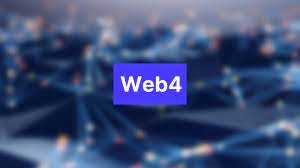Web4 is a concept that is still evolving, and its exact definition and characteristics are not yet fully established. However, based on current trends and discussions in the technology community, there are a few potential directions and concepts that may shape the future of Web4:
- Decentralization and Sovereignty: Web4 could focus on further decentralizing the web, giving users greater control over their data and online identities. It may emphasize self-sovereign identity (SSI) systems, where individuals have ownership and control over their digital identities and can selectively share information with trusted entities.
- Interoperability and Integrations: Web4 might emphasize interoperability between different blockchain networks and other emerging technologies. It could enable seamless communication and data exchange across various decentralized platforms and protocols, creating a more connected and integrated web experience.
- Artificial Intelligence and Machine Learning: Web4 could leverage advancements in artificial intelligence (AI) and machine learning (ML) to enhance user experiences, automate processes, and provide personalized services. AI-powered systems could facilitate more intelligent, context-aware interactions and enable new applications and services on the web.
- Web3 Integration and Evolution: Web4 might build upon Web3 technologies and concepts, further expanding the capabilities of decentralized applications and smart contracts. It could address scalability, privacy, and usability challenges associated with existing Web3 platforms, enabling more widespread adoption and mainstream use.
- Immersive Technologies: Web4 may incorporate immersive technologies such as virtual reality (VR), augmented reality (AR), and mixed reality (MR). It could enable immersive browsing experiences, virtual social environments, and new forms of content consumption and interaction.
- Enhanced Security and Privacy: Web4 might prioritize enhanced security and privacy measures, including stronger encryption, decentralized storage, and privacy-preserving technologies. It could aim to provide users with greater control over their data and protection against surveillance and unauthorized access.
As of now, there is no universally agreed-upon definition or specification for Web4. The concept of Web4 is still evolving and is not yet widely recognized or implemented.
However, there are several emerging trends and technologies that are expected to shape the future of the web and potentially contribute to the development of what could be called Web4:
- Artificial Intelligence and Machine Learning: As AI and machine learning technologies continue to advance, they have the potential to greatly enhance the capabilities of web applications. Web4 could potentially leverage these technologies to provide more personalized and intelligent user experiences, automate tasks, and deliver highly tailored content.
- Decentralization and Blockchain: Web3 is already focused on decentralization and the use of blockchain technologies. Web4 could build on this foundation and further decentralize the web, providing even greater control and ownership of data for individuals and more secure and transparent transactions.
- Internet of Things (IoT): With the proliferation of connected devices, Web4 could incorporate IoT technologies to create a more interconnected and seamless web experience. This could include smart homes, wearable devices, and the integration of web technologies and services into everyday objects and environments.
- Virtual Reality and Augmented Reality: VR and AR technologies are becoming more accessible and sophisticated. Web4 could incorporate immersive and interactive VR and AR experiences, enabling users to explore virtual worlds, conduct business meetings, and interact with digital content in entirely new ways.
- Quantum Computing: Quantum computing has the potential to solve complex problems and process vast amounts of data at unprecedented speeds. Web4 could leverage quantum computing to enable advanced data analysis, cryptography, and optimization algorithms, pushing the boundaries of what is currently possible on the web.
It’s important to note that these are speculative possibilities, and the exact characteristics and features of Web4 are still uncertain. As technology evolves and new innovations emerge, the concept of Web4 will likely continue to evolve as well.
